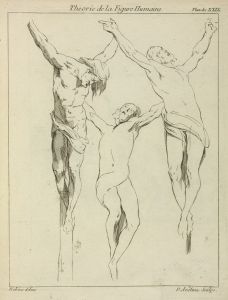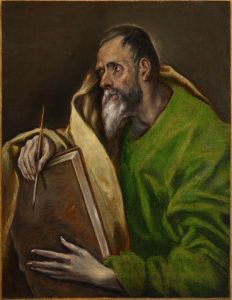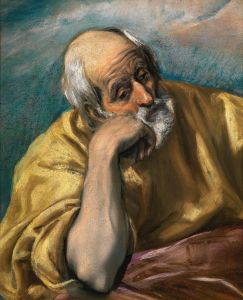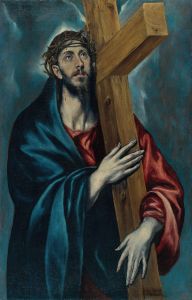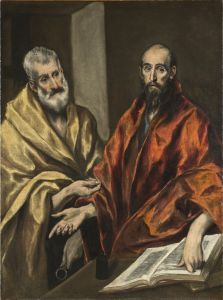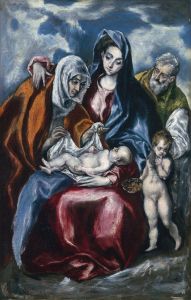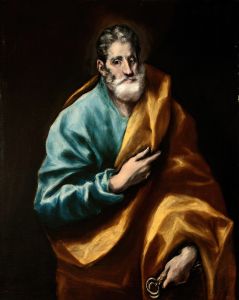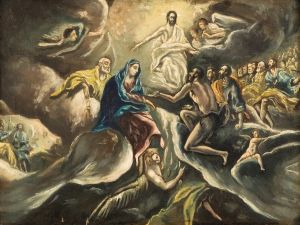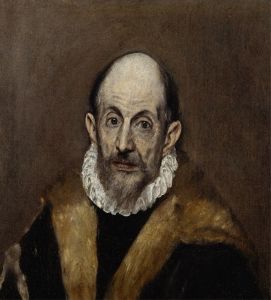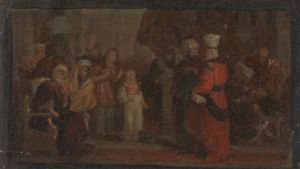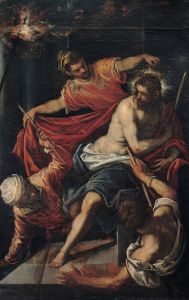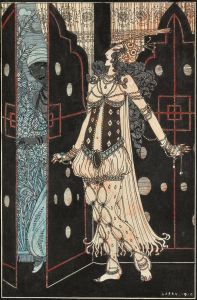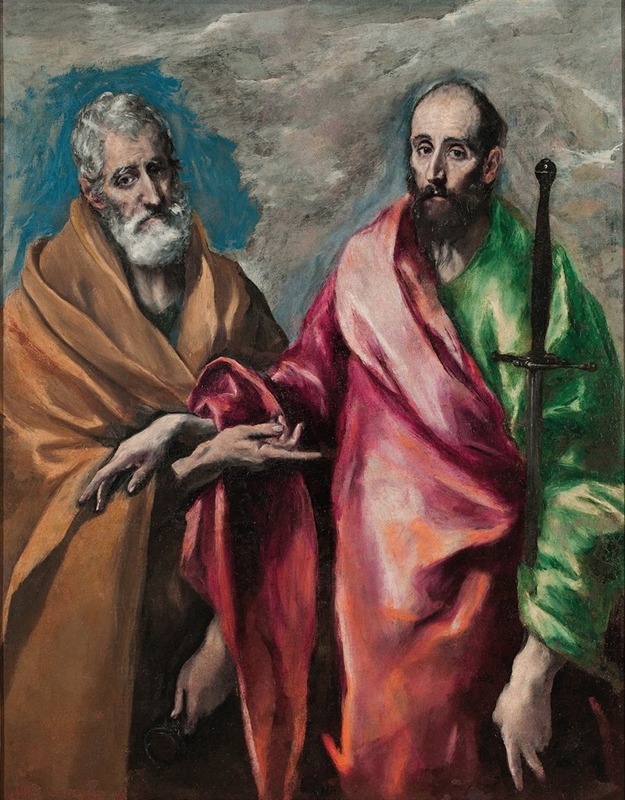
Saint Peter And Saint Paul
A hand-painted replica of El Greco (Domenikos Theotokopoulos)’s masterpiece Saint Peter And Saint Paul, meticulously crafted by professional artists to capture the true essence of the original. Each piece is created with museum-quality canvas and rare mineral pigments, carefully painted by experienced artists with delicate brushstrokes and rich, layered colors to perfectly recreate the texture of the original artwork. Unlike machine-printed reproductions, this hand-painted version brings the painting to life, infused with the artist’s emotions and skill in every stroke. Whether for personal collection or home decoration, it instantly elevates the artistic atmosphere of any space.
"Saint Peter and Saint Paul" is a painting by the renowned artist El Greco, whose real name was Domenikos Theotokopoulos. El Greco was a prominent painter, sculptor, and architect of the Spanish Renaissance, known for his distinctive style that combined elements of the Byzantine tradition with Western painting techniques.
The painting "Saint Peter and Saint Paul" was created around 1587-1592, during El Greco's mature period when he was living in Toledo, Spain. This work is a significant example of El Greco's ability to convey deep religious sentiment and complex theological themes through his unique artistic vision.
The painting depicts two of the most important apostles in Christianity, Saint Peter and Saint Paul. Saint Peter, traditionally considered the first Pope and the rock upon which Jesus built his church, is shown on the left side of the painting. He is identifiable by his white hair and beard, as well as the large key he holds, symbolizing the keys to the Kingdom of Heaven. Saint Paul, on the right, is recognized by his bald head and dark beard, and he holds a book, representing his epistles in the New Testament, and a sword, symbolizing his martyrdom.
El Greco's use of color, light, and form in this painting is characteristic of his style. The figures are elongated and rendered with dramatic, expressive gestures. The background is dark, which serves to highlight the luminous quality of the apostles' faces and garments. The intense, almost otherworldly light that seems to emanate from the figures themselves is a hallmark of El Greco's work, contributing to the spiritual and mystical atmosphere of the painting.
The composition of "Saint Peter and Saint Paul" is notable for its balance and symmetry. The two saints are positioned close together, creating a sense of unity and dialogue between them. This reflects their historical and theological significance as pillars of the early Christian Church, despite their differing roles and personalities.
El Greco's painting is also marked by its emotional intensity. The expressions of Saint Peter and Saint Paul convey a deep sense of contemplation and spiritual fervor. This emotional depth is enhanced by the artist's masterful use of color, with vibrant reds, blues, and greens contrasting with the darker background to draw the viewer's attention to the central figures.
"Saint Peter and Saint Paul" is housed in the Museo Nacional del Prado in Madrid, Spain. The painting is part of the museum's extensive collection of works by El Greco, which showcases the artist's significant contribution to the art of the Spanish Renaissance. The Prado Museum is one of the most important cultural institutions in Spain, and its collection of El Greco's works provides valuable insight into the artist's development and influence.
In summary, "Saint Peter and Saint Paul" by El Greco is a masterful representation of two key figures in Christian history, rendered with the artist's characteristic emotional intensity and distinctive style. The painting exemplifies El Greco's ability to blend Byzantine and Western artistic traditions, creating works that are both deeply spiritual and visually striking.






